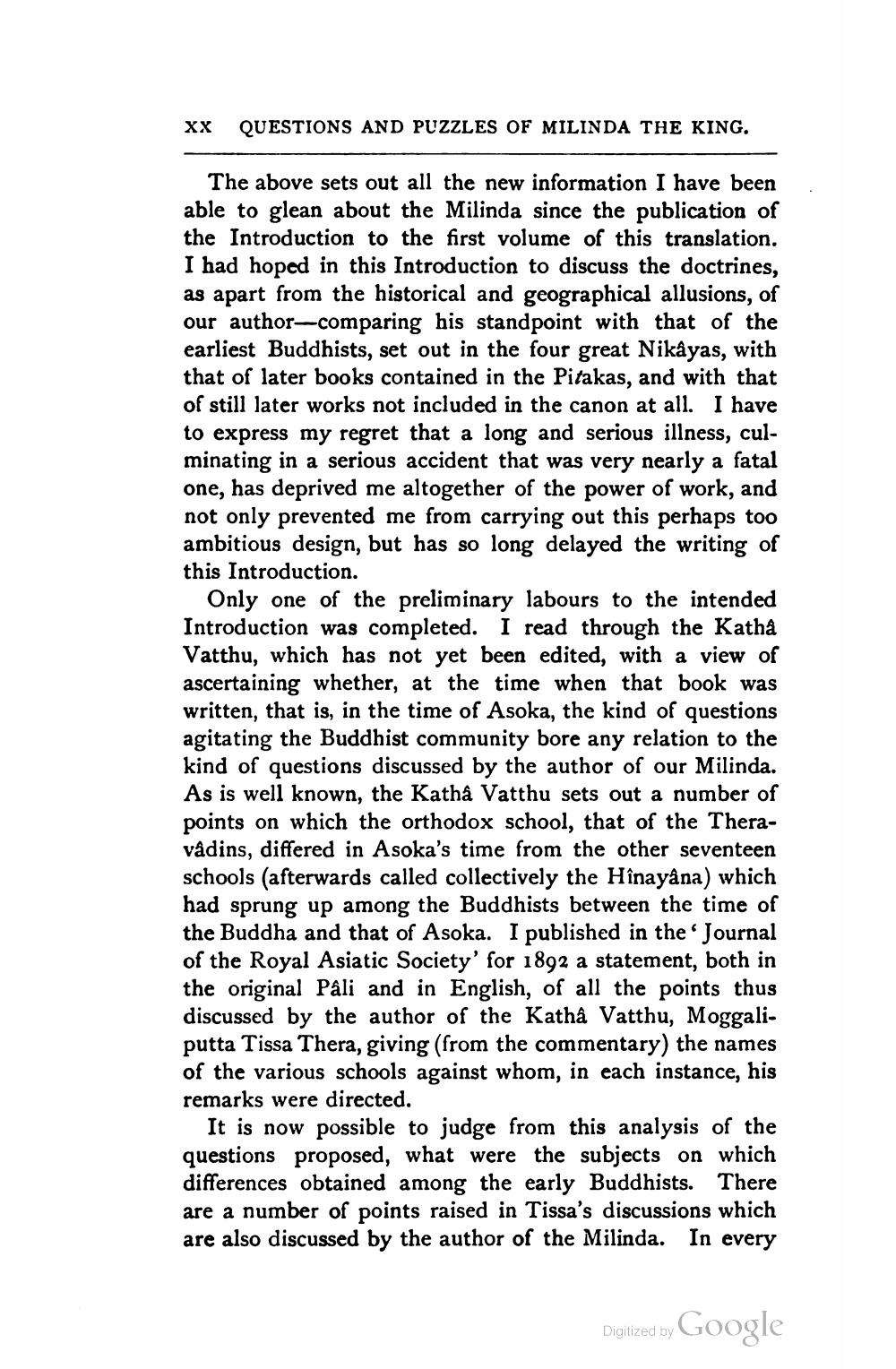________________
XX
QUESTIONS AND PUZZLES OF MILINDA THE KING.
The above sets out all the new information I have been able to glean about the Milinda since the publication of the Introduction to the first volume of this translation. I had hoped in this Introduction to discuss the doctrines, as apart from the historical and geographical allusions, of our author-comparing his standpoint with that of the earliest Buddhists, set out in the four great Nikayas, with that of later books contained in the Pitakas, and with that of still later works not included in the canon at all. I have to express my regret that a long and serious illness, culminating in a serious accident that was very nearly a fatal one, has deprived me altogether of the power of work, and not only prevented me from carrying out this perhaps too ambitious design, but has so long delayed the writing of this Introduction.
Only one of the preliminary labours to the intended Introduction was completed. I read through the Katha Vatthu, which has not yet been edited, with a view of ascertaining whether, at the time when that book was written, that is, in the time of Asoka, the kind of questions agitating the Buddhist community bore any relation to the kind of questions discussed by the author of our Milinda. As is well known, the Katha Vatthu sets out a number of points on which the orthodox school, that of the Theravådins, differed in Asoka's time from the other seventeen schools (afterwards called collectively the Hînayana) which had sprung up among the Buddhists between the time of the Buddha and that of Asoka. I published in the Journal of the Royal Asiatic Society' for 1892 a statement, both in the original Páli and in English, of all the points thus discussed by the author of the Katha Vatthu, Moggaliputta Tissa Thera, giving (from the commentary) the names of the various schools against whom, in each instance, his remarks were directed.
It is now possible to judge from this analysis of the questions proposed, what were the subjects on which differences obtained among the early Buddhists. There are a number of points raised in Tissa's discussions which are also discussed by the author of the Milinda. In every
Digitized by Google




